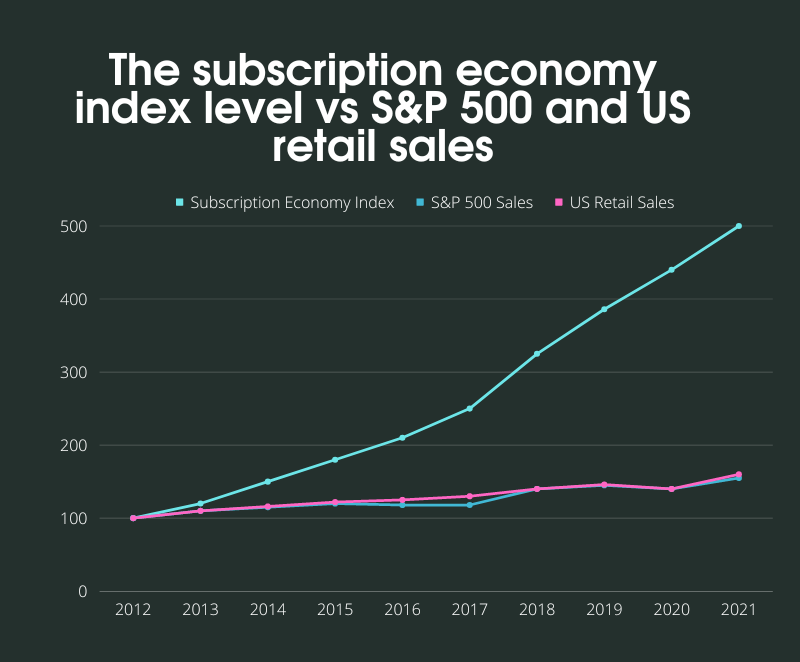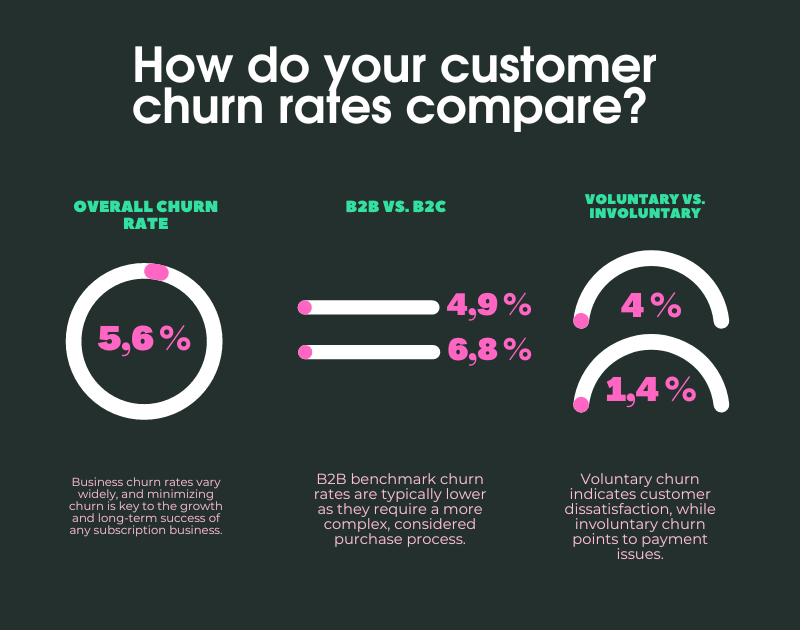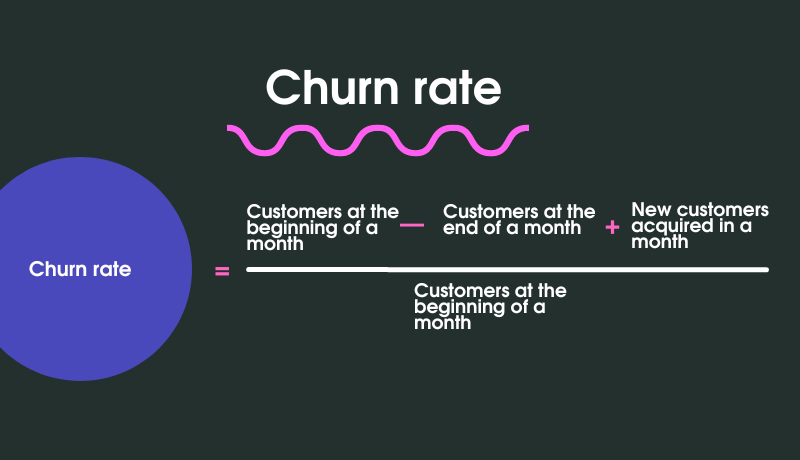Subscriptions began as a strategy of magazine owners to retain readers in the 1600s and quickly evolved into a technique used by retail businesses worldwide to attract more customers. The market demand for subscriptions surged during the COVID-19 pandemic and doesn’t stop even during the global economic crisis. The Business Research Company states that ecommerce subscriptions market is expected to grow by 65% and reach a whopping $1 trillion in 2026.
Why bad times are good for subscriptions
Businesses hardly had time to recover from the effects of COVID-19, as a new challenge emerged. The invasion of Ukraine and lockdowns in China caused global inflation that worries people 208% more than the coronavirus.
With inflation on the rise and the looming threat of a recession, it’s more difficult for ecommerce businesses to keep afloat. Merchants have to cope with slowing investments, increased competition, and high acquisition costs that have increased by as much as 222% since 2013. Just imagine, brands lose an average of $29 from every customer they acquire!
Keeping this in mind, customer retention becomes in focus. Offering subscriptions has to be the answer to the ever-increasing challenges ecommerce companies face today. They allow for a consistent recurring revenue, better financial forecasting,and long-term relationships with customers. It’s no longer a nice-to-have option but a must-have for businesses that want to build loyalty and increase retention. According to Zuora, subscription businesses have shown 4.6 times faster growth compared to the largest 500 traditional public companies in the United States (S&P 500).

Why subscriptions?
1. Increase customer lifetime value (CLTV)
Businesses know that it’s cheaper to retain a current customer than to attract a new one. In fact, a study by Investpcro found that it costs five times more to gain a new customer than to retain an existing one.
Repeat customers are highly valuable because they have already shown a willingness to spend money with the company. They are 67% more likely to make future purchases, while new customers are only 5-20% likely to buy from you. Moreover, repeat customer statistics reveal that they spend 33% more per order than new customers.
This way, subscriptions allow merchants to increase CLTV — the amount of money a customer is expected to spend with a business over the course of relationship. Boosting customer lifetime value helps merchants make smarter business decisions to increase their revenue.
CLTV can be calculated by the following formula:

For example, a coffee lover buys a pack of coffee from an online store every month, which might be worth:
CLTV = $20 (per a pack of coffee) x 12 (packs in a year) x 5 (years) = $1,200
Taking these numbers, merchants can better understand their customers — who the most profitable clients are, what they like, and which products have the highest profitability — and use this data to drive returning sales.
2. Improve average order value (AOV)
Average order value is yet another crucial metric to focus on when running a subscription business. Along with the average ecommerce conversion rate and CLTV, it forms the ‘big three’ of ecommerce optimization.
AOV is the average total amount that the customer spends on your website. If you’re a Shopify store owner, you can find your average order value in Customer reports. Or you can calculate your company’s average order value yourself: simply divide total revenue by the number of orders.

For example, your business earned $50,000 from 1,000 orders in a month. In that case, your AOV would be $50,000 divided by 1,000 = $50.
But how implementing subscriptions can improve average order value? Unlike one-time purchase buyers, subscribers generate consistent revenue. Imagine two coffee businesses. One sells a $50 pack of coffee and the average customer typically buys it once. The other sells a $50 pack of coffee and the average customer buys it once a month over a year. Assuming the two businesses and products are for the rest the same, who has more total revenue? Of course, a subscription business.
Furthermore, subscription businesses can offer their customers upsells and cross-sells, free shipping, product bundles, and discounts to build customer loyalty and keep them coming back, which contributes to a higher AOV in the long term.
3. Reduce customer churn rate
Reducing customer churn should be the top priority for any business as it shows directly how happy your customers are with your product or service. There is inverse dependence between ecommecre churn rate and customer retention rate: the lower churn rate produces higher retention, which positively impacts profits and revenue.
By offering subscriptions, merchants can maximize the time they have with customers and give them a seamless experience to keep buying from their online store.
Each industry has its own average churn rate, and, according to Recurly, the average subscription churn rate is 5.6%.

You can calculate your monthly churn rate to see how it compares to the average number by the following formula:

For example, if you have 100 customers on January 1, 105 customers on January 31, and acquired 10 customers in the month, your churn for January would be 5%:
(100 – 105 + 10) / 100 = 5/100, or 5% churn rate
One should distinguish between voluntary and involuntary churns. An involuntary churn is when customers unsubscribe unintentionally due to the reasons such as failed payments, expiring cards, and credit card declines. Businesses risk losing 7.2% of their subscribers each month due to involuntary churn.
The great news is that you can reduce this rate with flexible subscription options. By letting your subscribers pause and renew a subscription at any time, skip a shipment, or change a charge day you can retain them. The more flexibility, the better.
4. Boost customer satisfaction
The subscription commerce model provides benefits to customers as well. For consumers, subscriptions serve as a predictable and recurring monthly cost, which streamlines budgeting efforts and allows them to obtain products or services at a lower price.
In addition, customers have proven that they are willing to pay for subscription membership to access exclusive content, services, and goods because of the convenience, in addition to the cost benefits. In a recent study looking at entertainment and media subscriptions, Statista found that the average consumer in the United States had 12 paid subscriptions, while Millenials had the most — 17 subscriptions.
Why is the adoption slow?
Research by Manifesto Growth Architest found that three-quarters of business leaders believe that the subscription model is the key to ecommerce growth and success, yet very few are harnessing its potential. Among 504 respondents across different industries, only 24% were implementing it, and only 7% were generating significant income with subscriptions.
Around 24% of business leaders said they were trying out subscription models but weren’t sure how they would evolve and 22% said membership products had definite potential, but they were unsure how to approach them.
While many leaders saw the value of subscriptions, why don’t they adopt them? The principal reason is that business owners don’t know how to leverage subscriptions the right way. Starting a subscription business is not a piece of cake. It requires careful consideration depending on your business size, target market, industry, and prospective customer base. Choosing the wrong approach may cause challenges, such as stock, order fulfillment, and refund issues.
5 steps to launch a subscription business
We’ve prepared a step-by-step guide aimed to help Shopify merchants launch an ecommerce subscription fast and effectively.
1. Craft your subscription business idea
It all starts with identifying your business idea. Determine what products or services you want to sell as a subscription. Ask yourself if it makes sense to sell this product on a recurring basis. To help those who just plan to start their business, here’s the list of the most popular types of subscription products:
- Food and beverages
- Health and wellness
- Clothes and fashion
- Household goods
- Pet products
If you already have an existin online store with a solid customer base, you can ask yourself: Would offering this or that product as a subscription add value to your customers?
Next, decide on the type of subscriptions you want to offer:
- Replenishment (subscribe and save) — merchants offer the same products, mostly FMCG, on a consistent basis.
- Curation (subscription box) — merchants curate a box of one or more products, which are packaged together and shipped on a regular basis.
- Access (membership model) — merchants offer a membership with different benefits to their subscribers.
When you have a solid sense of WHAT and HOW to sell as a subscription, you’re ready to move next.
2. Create a website or tweak the existing one
If your subscription business is new, then you’ll need to create a website to sell your products. Customers care about the appearance of your site and its usability, so focus on these things. When it comes to selecting the platform to launch your webstore, Shopify seems to be a good choice – it’s affordable and easy to use.
If you already have an online store, you’ll need to make some changes to it to start offering subscriptions. Add a customer portal where your shoppers can manage their subscriptions and add a subscription widget on a product page – all this can be done via installing a subscription app, which is the next step.
3. Select a subscription management solution
Choosing the subscription management solution that will suit your business needs is by far the most important step and therefore all options should be carefully considered. If you already have or just plan to launch a Shopify-based store, there’s good and bad news for you. Shopify doesn’t have native tools to offer subscriptions but you can select one from more than 70 subscription apps available on Shopify App Store to easily set up and manage your subscriptions.
All apps are aimed at various types of businesses and differ in their functionality, so compare a few before you choose one. Watch the app overall rating, read reviews, see a demo store, and learn prices carefully – all this will help you choose the best subscription app for your business. For example, RecurrinGO! Subscriptions comes with all the features needed to set up a high-converting and successful subscription business and has a 14-day free trial to test it.
4. Set up your subscription solution
No matter which subscription app you select to install, it should be properly configured to start bringing you recurring revenue. First, you should configure the subscription rule (campaign): add products, select how often you want to deliver them on a recurring basis, offer a discount, and decide on a shipping method and payment type.
Second, you should customize the subscription widget to fit your store’s look and feel – edit fonts, colors, and change buttons. Your customers will see the subscription widget on a product page. Once the widget customization is complete, you can publish it and start taking subscription orders.
5. Start accepting subscription orders
The last step seems to be the easiest one — you need to accept orders and deliver products to your customers. But in a fact, your work doesn’t end there. You should constantly monitor your analytics to know what works well and what can be finetuned.
As your subscription business grows, you’ll see start seeing more loyal subscribers and build recurring revenue. In the long term, this will help create confidence in your business and create plans for the future.
The bottom line
Now, that you know everything about starting a subscription business — its benefits, possible challenges, and simple steps to implement right now — you should not delay it. Following the steps outlined above, merchants can ensure they do everything right to create a seamless customer journey for their subscribers.
To win the competitive race, join the business leaders who already implement a subscription business model and see their customers returning month after a month. Book a demo to see how RecurrinGO! can be used to help you with this!
![Why and how to start a subscription business <br>[a comprehensive guide]](https://recurringo.com/wp-content/uploads/2023/02/Frame-4.png)